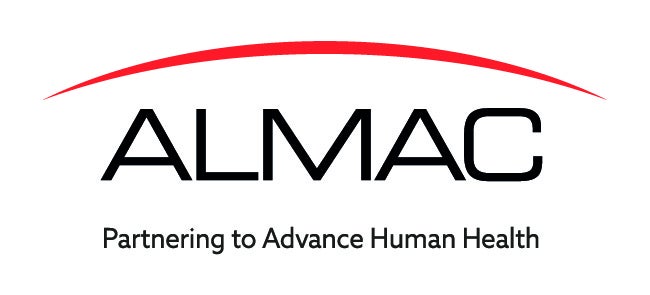
Interactive Response Technology (IRT) can serve many different functions in clinical research, from patient randomisation to making data-driven calculations for patient dosing. But, how can modern systems give sponsors the edge to develop drugs as quickly as possible and at a lower cost, two factors that are particularly advantageous when developing drugs and vaccines amidst a global pandemic?
Evolution of IRT
IRT began as simple voice-response systems that allowed investigators to automate clinical trial data entry. Investigators used touchtone keypads to input clinical site data and typically received responses by fax. As trial designers incorporated growing waves of biomedical advances to create increasingly complex and global studies, technology specialists leveraged advances in IT and automation to produce Interactive Web Response Systems (IWRS) and technology-independent IRT for clinical trials. Recent generations of IRT systems have given trial designers even more choices, functionalities and flexibility. Modern systems can manage patient enrolment, investigational product and other key aspects of clinical trial workflow management. The most advanced IRTs give sponsors the flexibility to customise elements and create layers of complex data collection & calculation mechanisms. But, modern IRT systems are not created equally. Sponsors must consider which systems offer them the greatest speed, flexibility and cost savings while moving from trial concept to startup. In addition, they should evaluate how the various systems could reduce their volume of burdensome documentation and time required.
Pain points
These questions are critical to raise, especially as clinical trial protocols are becoming increasingly expensive and intricate to both design and implement in response to the need to swiftly create therapies for difficult-to treat illnesses, rare diseases with smaller patient populations1, and vaccines/treatments to thwart a global pandemic, a top-of-mind concern in today’s environment.
A Tufts Center for the Study of Drug Development study speaks to how trials are increasing in complexity; the total number of clinical endpoints rose 86% between 2001–2005 and 2011–2015. This trend continues to grow, leading to larger amounts of data being collected in trials than ever before. Moreover, data are being collected in diverse ways via wearables, telemedicine, at-home healthcare visits, in person visits to the clinic and local collection labs, and more.
Clinical protocols become even more complicated for therapies developed for approval in the global market such as during a pandemic, creating a situation in which multiple trials (particularly Phase III) are running simultaneously in numerous sites and various countries2.
Any necessary protocol amendments would also be complicated3, creating the possibility for delays and additional costs to plan and implement across numerous, potentially multinational, sites. These aren’t the only pain point’s clinical trial manager’s face, however. Other factors that threaten to expand clinical timelines include extensive sign-off requirements, discussions, laborious documentation and user acceptability testing (UAT).
These protocol complexities combine to slow down investigative site selection and initiation as well as increase the possibility of data management variation and elongate timelines— not to mention increase costs. The paradox is, of course, that drug makers are under pressure to develop products in shorter timeframes and at as low a cost as possible, which is especially the case of COVID-19 clinical trials. Unfortunately, many configurable systems are not up to the task of shortening clinical timelines. They lack the necessary flexibility to bring products from the clinic to the patient quickly and require users to spend considerable time defining requirements and specifications for startup.
Next-generation tool
With substantial experience in this field, Almac Clinical Technologies sought to address these pain points through the analysis of over 3,000 clinical trial protocols to identify common needs and functions that can be consolidated into a pre-validated and fully configurable clinical workflow ecosystem. The result is Simplify™, an IRT solution that allows clients to use and configure pre-validated tools and components to help sponsors and investigators focus on trial conduct. Time savings. With Simplify, trial workflows can be designed and implemented in days to weeks – depending upon complexity.
The specific investigational products, dosing regimens and patient inclusion/exclusion criteria are unique to each trial, but the underlying designs, randomisation plan and product distribution needs are familiar. Sponsors that don’t want—or have time—to be slowed by extensive discussions around trial requirements, documentation and User Acceptability Testing (UAT) can pick and choose from pre validated elements to create and implement the needed IRT system functionality in record time.
Sponsors simply select the functionality (via configuration document) needed for a particular trial, thus reducing the volume of documentation that must be reviewed and signed off in design and UAT. Without a pre-validated route, these time consuming and laborious steps become high-overhead milestones on a slow journey toward commercialisation.
Configurability
Since core functionality is already configured, tested and validated in Simplify, sponsors can concentrate on configurations for their specific trial. This is a huge improvement over traditional e-clinical solutions where clients can expend considerable effort reviewing and testing every aspect of trial software.
Simplify, combining fully configurable elements, is highly flexible to meet specific sponsor requirements while saving time and reducing overhead. In the current COVID-19 environment where time is of essence, Simplify has already helped several sponsors move from sign-off to patient enrolment in as little as seven days. If the scope changes or evolves after the trial begins, complex and customised functionality can easily be added as needed. Few pre-validated platforms have the flexibility to expand during later-stage trials in this manner.
Streamlining management of patients and supplies
Once a trial is launched, Simplify automates the randomisation of patients, product assignments and tracking/order supplies. Real-time dashboards and alerts improve trial efficiency with less lag in managing cohorts and monitoring progress. Reporting mechanisms provide real-time analytics to trial monitors, sponsors and investigators supporting efficient and timely decision making. Dosing decisions, even enrolment decisions, can be based on a complex interplay of biomarkers, laboratory values and other factors in addition to more familiar patient demographics.
That same focus on efficiency means sponsors can create and manage dynamic supply strategies based on real-time product usage rates and today’s forecasts, not the assumptions and forecasts set before the trial was launched. In summary, Simplify has the flexibility to accelerate rule-driven decision making to get trials started faster and conducted more efficiently with fewer hands-on hours from managers who are already over-burdened and under-resourced. Doing more with less, and doing it faster, is a strategy for success.
Best experience, best results
Sponsors, CROs and investigators are doing more and more complex trials than ever before, and with fewer staff and resources at their disposal. The Simplify IRT system allows sponsors to implement and use the functionality they need in a manner that removes unnecessary complexities. This approach helps to reduce the time it takes to initiate a clinical trial so that much-needed therapies get to patients faster than ever before.
When time is of the essence, such as in the face of a global pandemic, IRT systems can truly be a game changer by helping efficacious drugs show benefit as soon as possible and at a lower cost. Sponsors win, investigators win and, most importantly, patients win.
For More Information Visit: Almac Clinical –Technologies Simply IRT
References:
1 Getz, K., Campo, R. Trends in clinical trial design complexity.
Nat Rev Drug Discov 16, 307 (2017). https://doi.
org/10.1038/nrd.2017.65
2 “Rising protocol complexity is hindering study performance,
cost, and efficiency.” 20 Years Impact Report Analysis and
Insight Into Critical Drug Development Issues, Tufts Center
for the Study of Drug Development, July/August 2018,
Volume 20, Number 4, https://static1.squarespace.com/
static/5a9eb0c8e2ccd1158288d8dc/t/5b4de76e352f53bd7a
416e1b/1531832174796/julaug-summary.pdf
3 Kenneth A. Getz, MBA, Stella Stergiopoulos, BA, Mary Short,
RN, MSN, et al. The Impact of Protocol Amendments on
Clinical Trial Performance and Cost. Sage Journals, February
2016 Vol 50, issue: 4, page(s): 436-441, https://journals.
sagepub.com/doi/abs/10.1177/2168479016632271




